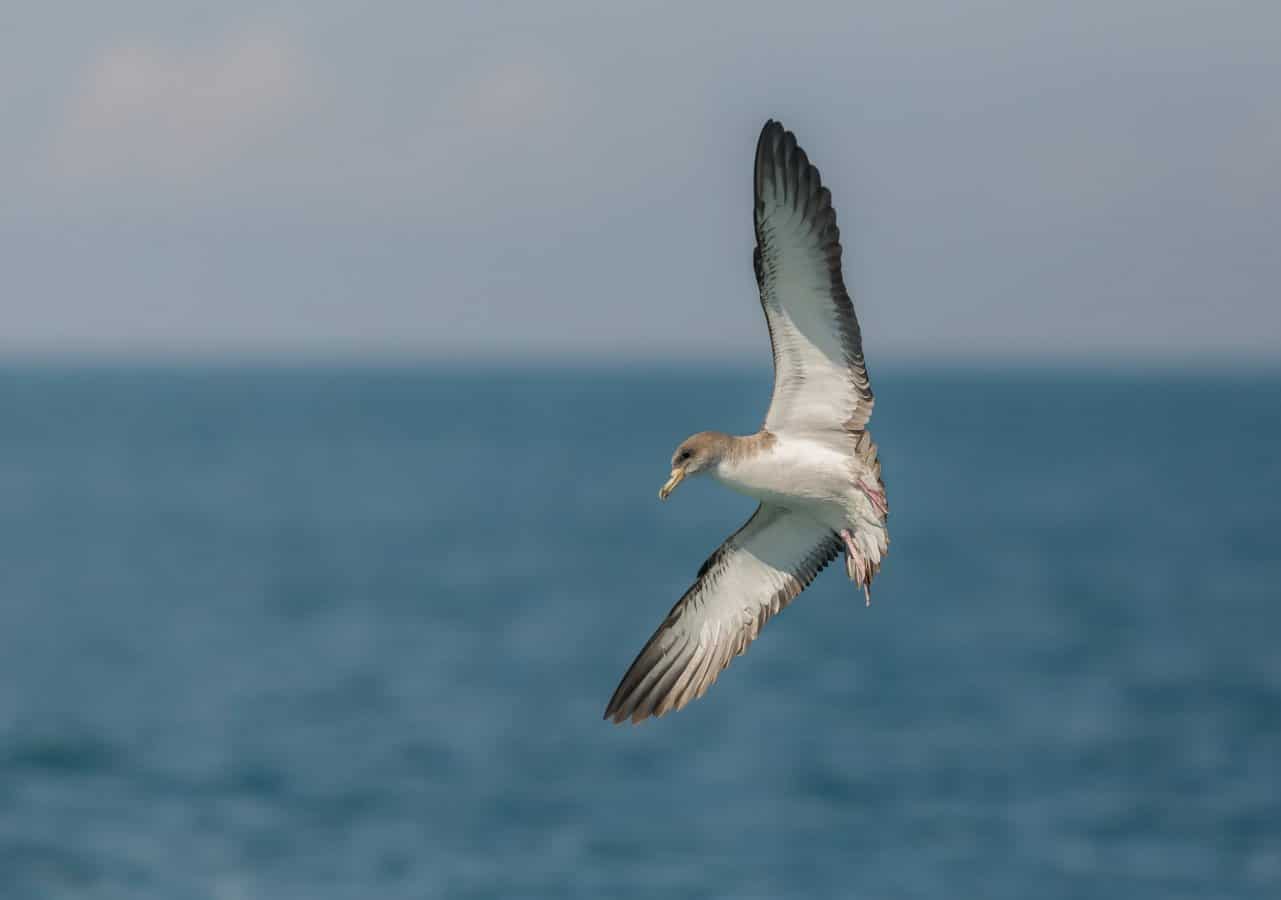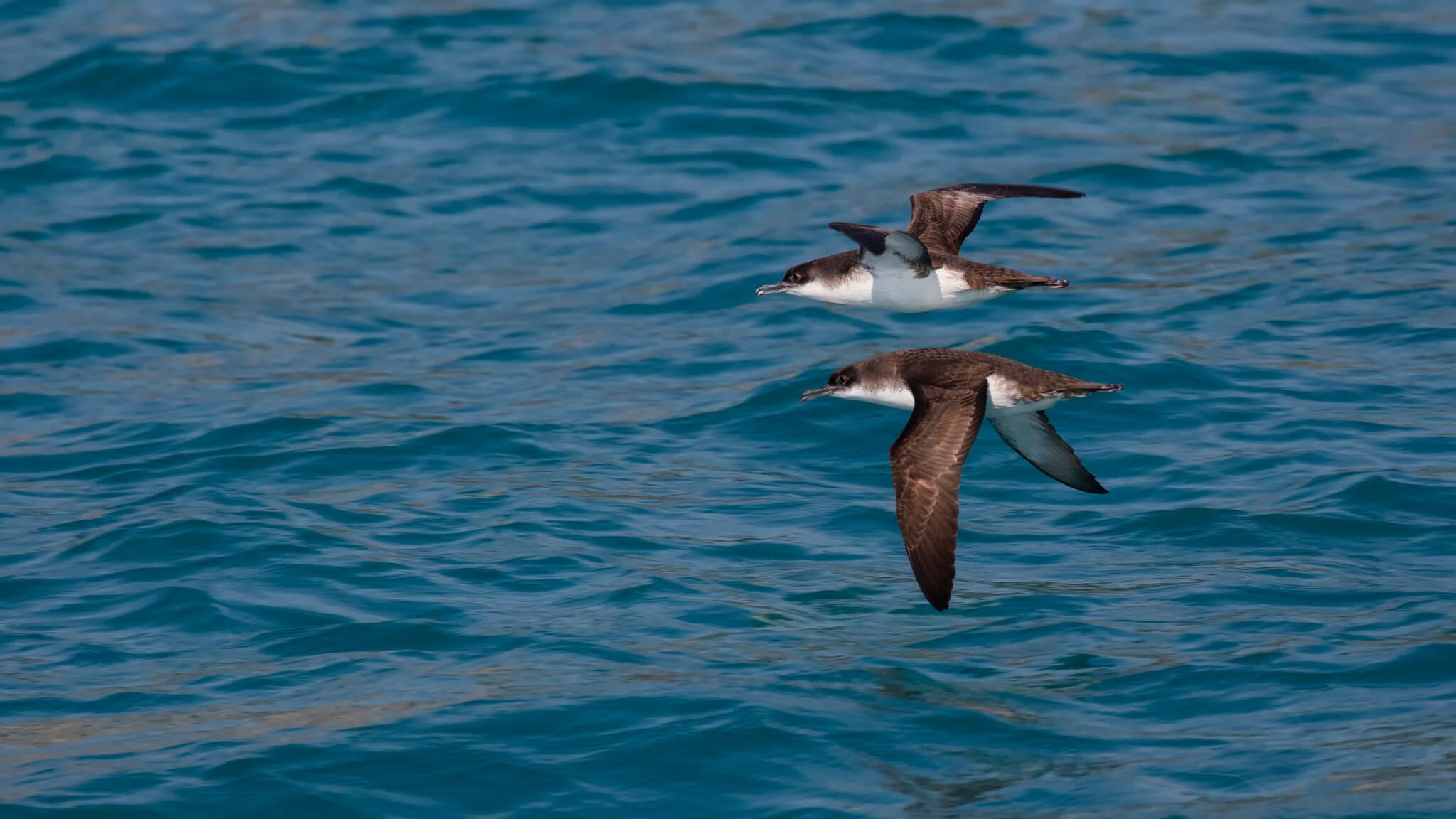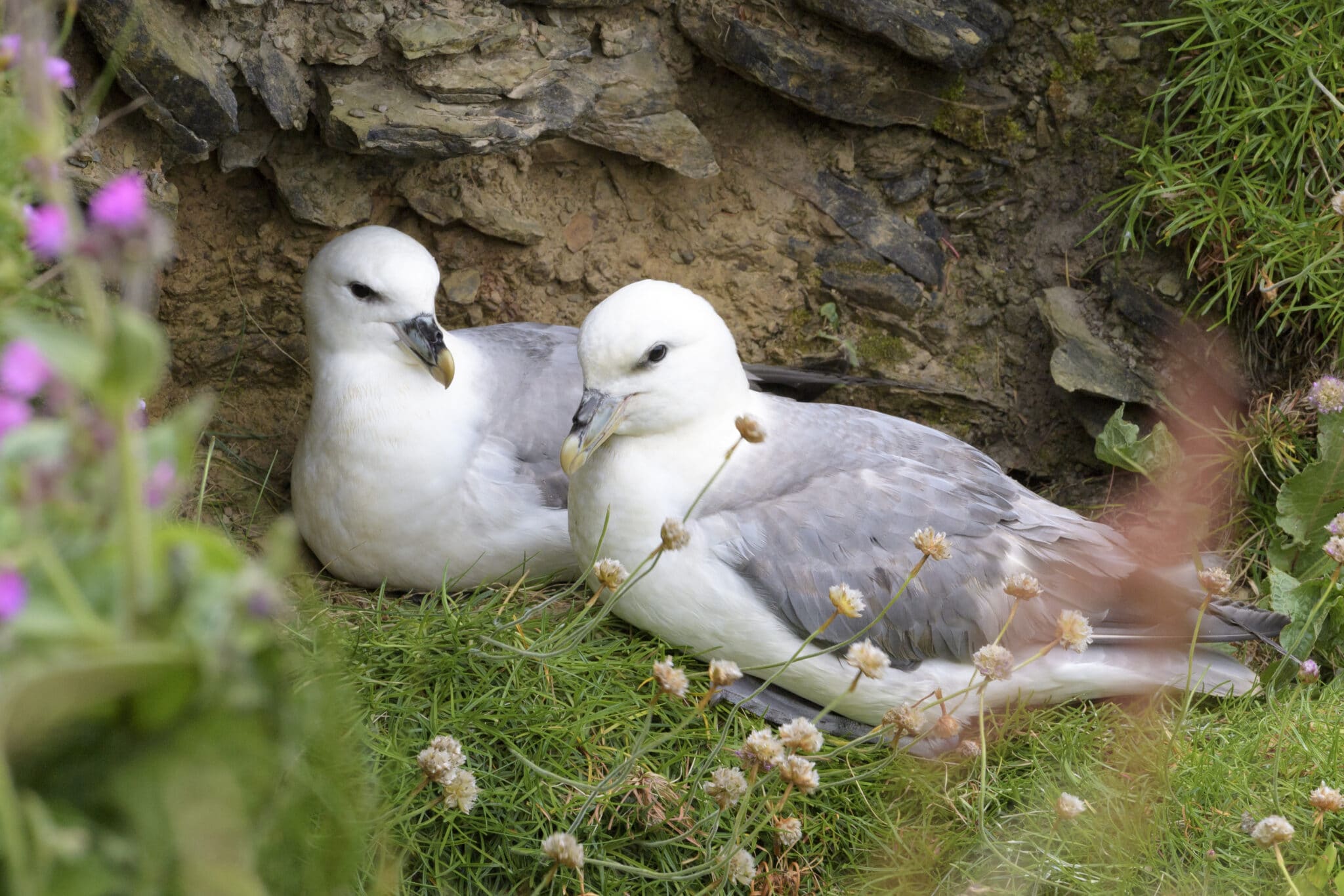Seabird of the month – Cory’s shearwater (Calonectris borealis)
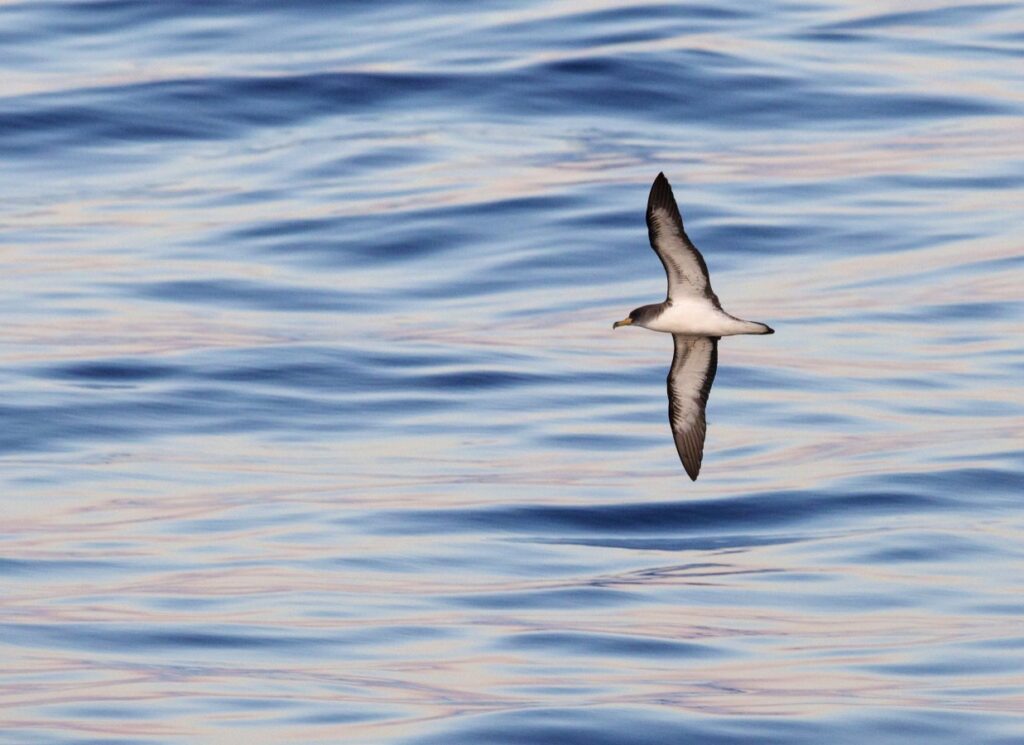
Another month, another seabird.
by Antonio Vulcano
IUCN status
Least Concerned (LC)
Global population
252,000-253,000 pairs
Description
Wingspan: 118–126 cm
Life span: over 20 years. The oldest recorded Cory’s Shearwater died at 40 years old! He was ringed in Selvagens (Portugal) and died in Plettenberg Bay (South Africa)
Distinctive features: When flying, this seabird can be recognised by their long glides over the water. Up close, you’ll see that the Cory’s Shearwater feathers are brownish grey on their upperpart with paler upper tail coverts and whitish underparts. Their bill is a pale pinkish yellow, with black colour near the tip and tube shape nostrils used to flush excess salt.
Main prey: Cory’s Shearwaters prey on small pelagic fish and squid, caught on the surface and as deep as 15 meters. They are attracted to fishing boats to feed on offal.
Breeding
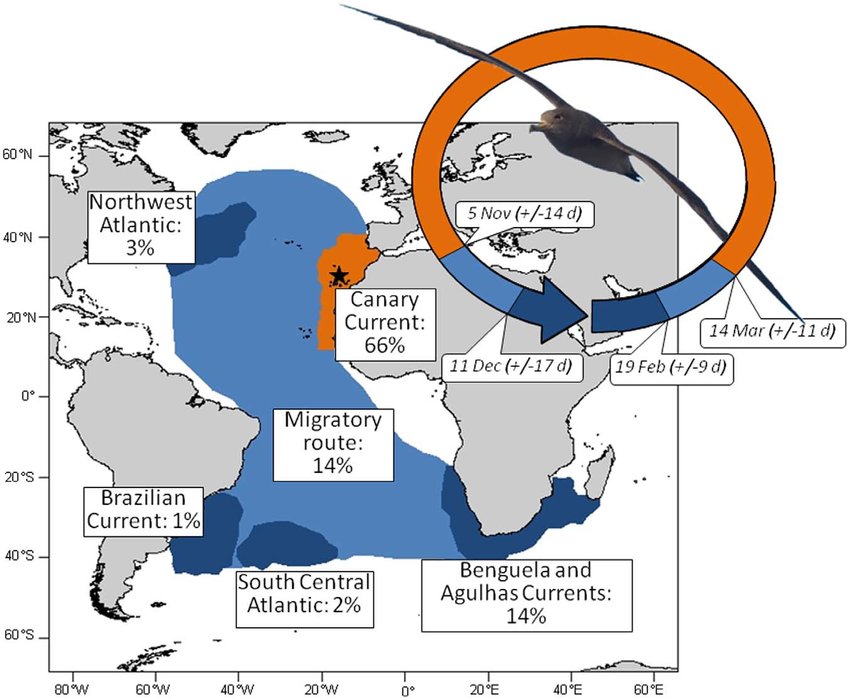
Cory’s Shearwaters mate with the same partner at the same breeding site every year. Young birds reach maturity between the ages 5 to 7, before which they spend their entire time at sea. Breeding season starts in April. Females lay a single egg between the middle and end of May, with parents sharing incubation duties. The egg hatches at the end of July and the chick fledges in October.
Cory’s Shearwaters mainly breed in caves, burrows and crevices under fallen rocks in islands and islets. They are extremely faithful to their breeding sites and tend to return to the colony where they were born, every year. Even juvenile shearwaters that spend their first years of life at sea return to look for potential partners. Cory’s Shearwaters exhibit migratory flexibility between years, meaning they do not have a set destination during their migration across the Atlantic Ocean. Age and experience progressively influence the refinement of migratory behaviour and year-round spatial distribution.
Population distribution
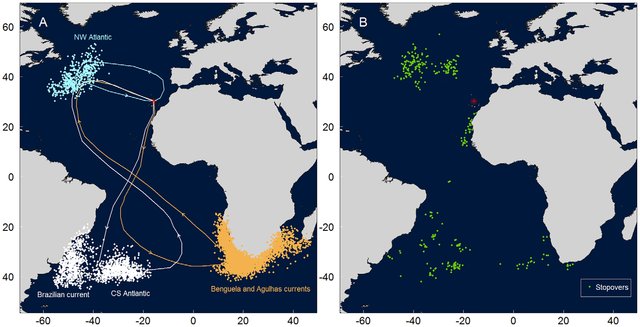
This seabird mainly breeds in the Atlantic islands of the Portuguese islands of Azores and Madeira, as well as the Canary Islands. A smaller population also breeds on the Berlengas Islands and few pairs in the Western Mediterranean basin. Most Cory’s Shearwaters winter in the Atlantic. During their migration journey they follow an 8-shape pattern with frequent stopovers around West African coasts and the Southwestern coasts of Ireland and Great Britain.
The largest colony consists of around 30 000 pairs and is found in Portugal, on the island of Selvagem Grande. Other large colonies with around 11 000 pairs each are the Chinijo Archipelago, Lanzarote, and the Canary Islands.
Main threats
- Bycatch
- Invasive alien species and introduced predators such as rats and cats
- Illegal hunting or catching
- Light pollution
BirdLife and Cory’s Shearwaters
Our Portuguese Partner SPEA is the ambassador of this species and work tirelessly to protect this seabird. Their campaign “Ilhas Santuário para as Aves Marinhas” shows the wonders of the Cory’s breeding period. The Cory’s will also benefit from SPEA’s work to reduce light pollution and maximise the energy efficiency of new lighting technology! On SPEAs Facebook page, you can discover their amazing work with seabirds in the Macaronesian islands!
Fun fact
In popular culture, shearwaters are called souls, ghosts or even devils because of their peculiar call that sounds a like a baby crying or the “sound of a lost soul”. Listen to their call here and decide for yourself.
Image credits: Cory’s shearwater (Calonectris borealis) ©AGAMI
You might also be interested in:
 | Stichting BirdLife Europe gratefully acknowledges financial support from the European Commission. All content and opinions expressed on these pages are solely those of Stichting BirdLife Europe. The European Commission is not responsible for any use that may be made of the information it contains. |
